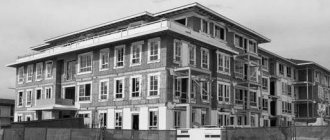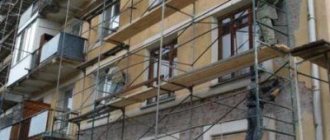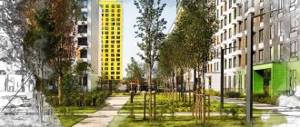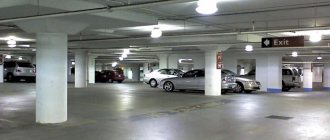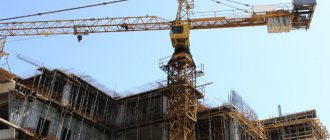Lawyers' answers (1)
Good afternoon, Anna.
Unfortunately, you will not be able to take any practical actions until your neighbor causes you actual harm (for example, damaging a stroller).
I can suggest that you paste a response message with the following content above the stroller:
According to Art. 36, “Housing Code of the Russian Federation” dated December 29, 2004 N 188-FZ (as amended on July 2, 2013)
1. The owners of premises in an apartment building own the common property in the apartment building by the right of common shared ownership.
, namely:
1) premises in this house,
not being parts of apartments and intended to serve more than one room in a given building,
including inter-apartment staircases
,
According to clause 2. Art. 35, “Constitution of the Russian Federation” (adopted by popular vote on December 12, 1993) (taking into account amendments made by the Laws of the Russian Federation on amendments to the Constitution of the Russian Federation dated December 30, 2008 N 6-FKZ, dated December 30, 2008 N 7-FKZ):
Everyone has the right to own property
, own,
use
and dispose
of it both individually and jointly with other persons
.
LLC "Center for Right Decisions"
What does the law say?
You need to refer to two articles - the civil code and the housing code of the Russian Federation.
- Article 290 of the Civil Code of the Russian Federation
The owners of apartments in an apartment building own, by right of common shared ownership, the common premises of the house, the supporting structures of the house, mechanical, electrical, sanitary and other equipment outside or inside the apartment that serves more than one apartment.
- Article 36 of the RF Housing Code
The owners of premises in an apartment building own, by right of common shared ownership, premises in this building that are not parts of apartments and are intended to serve more than one premises in this building, including inter-apartment landings, stairs, elevators, elevator and other shafts, corridors, technical floors, attics, basements...
Reducing the size of common property in an apartment building is possible only with the consent of all owners of premises in this building through its reconstruction.
In simple words, a corridor is part of the common property that belongs to all owners of apartments in this building. And you yourself cannot single-handedly install a partition that will block access to this area for other residents of the house. It is illegal! A partition is any wall, made of any material, with a door that has a lock and key, that is, no one except you can get in there.
You may be allowed to erect a wall only at a general meeting of residents, when all residents agree. This is controlled by articles - 44, 45, 46, 47, 48.
That is, in fact, you need to ask permission from all the residents of the house, and not just your landing, as is often the case.
Use of common areas in an apartment building
Question similar to the question dated 08/29/2012 regarding the use of the common hall on the floor.
New building house. We have 4 apartments on the floor. With our neighbors, with whom we have adjacent apartments, we want to install a partition door separating the hall, so as not to violate either the rights of the other two neighbors or fire safety rules.
Do we have the right to do this, and what approvals/consents do we need for this?
What kind of door should be installed (with ventilation windows, etc.)
Thanks in advance for your answer, Yuri (Moscow)
November 24, 2021, 18:13 Yuri, Moscow
Lawyers' answers (5)
Good afternoon Yuri.
First you need to find out who makes the decision regarding the installation of such a door. For these purposes, you should familiarize yourself with the charter of the HOA, housing cooperative or the agreement with the management company (depending on who you have). It may follow from these documents that the common property has been transferred, with the consent of the residents, to the operational management of the service organization. In such a situation, it will be necessary to contact the board of the HOA, housing cooperative or management company.
If not, then permission to install the door is given by all the owners of the apartments in the building, and not just your neighbors in the stairwell. To avoid problems, you can organize an absentee meeting of owners and obtain consent.
In addition, when installing the door, you should take into account the location of the electricity meters.
Have a question for a lawyer?
Since you will be placing the door in a common area, that is, you will be using common property, in this case you will need to obtain the consent of the general meeting of owners of the apartment building.
Housing Code of the Russian Federation, Article 36. Ownership of the common property of the owners of premises in an apartment building 1. The owners of premises in an apartment building own, by the right of common shared ownership, the common property in an apartment building, namely:
1) premises in this house that are not parts of apartments and are intended to serve more than one room in this house, including inter-apartment landings, stairs, elevators, elevator and other shafts, corridors, technical floors, attics, basements in which there are engineering communications, other equipment serving more than one room in a given house (technical basements); Art. 44 Housing Code of the Russian Federation 2. The competence of the general meeting of owners of premises in an apartment building includes: 1) making decisions on the reconstruction of an apartment building (including its expansion or superstructure), construction of outbuildings and other buildings, structures, structures, major repairs of common property in an apartment building, on the use of the capital repair fund;
2) making decisions on the limits of use of the land plot on which the apartment building is located, including the introduction of restrictions on its use;
3) making decisions on the use of the common property of the owners of premises in an apartment building by other persons, including the conclusion of contracts for the installation and operation of advertising structures, if for their installation and operation it is intended to use the common property of the owners of premises in an apartment building;
If there is no agreement, you may be required to dismantle the door.
Premises in an apartment building that are not parts of apartments and intended to serve more than one room in an apartment building are in the common shared ownership of the owners of the premises in the apartment building. The use of property (in your case, this is a common hall on the floor) located in common shared ownership is carried out by agreement of all its participants, and if agreement is not reached, in the manner established by the court. That is, at a general meeting of owners of premises in an apartment building, this issue can be considered.
Housing Code of the Russian Federation, Article 36. Ownership of the common property of the owners of premises in an apartment building 1. The owners of premises in an apartment building own, by the right of common shared ownership, the common property in an apartment building, namely: 1) premises in this building that are not parts of apartments and intended to serve more than one room in a given house, including inter-apartment landings, stairs, elevators, elevator and other shafts, corridors, technical floors, attics, basements in which there are utilities, and other equipment serving more than one room in a given house (technical basements); 2. The owners of premises in an apartment building own, use and, within the limits established by this Code and civil legislation, dispose of the common property in the apartment building.
Civil Code of the Russian Federation Article 247. Possession and use of property in shared ownership 1. Possession and use of property in shared ownership are carried out by agreement of all its participants, and if agreement is not reached, in the manner established by the court.
Yuri, good evening!
According to Art. 36 Housing Code
2. The owners of premises in an apartment building own, use and, within the limits established by this Code and civil legislation, dispose of the common property in the apartment building. 3. Reducing the size of common property in an apartment building is possible only with the consent of all owners of premises in this building through its reconstruction. 4. By decision of the owners of premises in an apartment building, adopted at a general meeting of such owners, common property in an apartment building may be transferred for use to other persons if this does not violate the rights and legitimate interests of citizens and legal entities.
according to clause 2 of the Rules for the maintenance of common property in an apartment building, approved. Decree of the Government of the Russian Federation of August 13, 2006 N 491
2. The composition of common property includes: a) premises in an apartment building that are not parts of apartments and intended to serve more than one residential and (or) non-residential premises in this apartment building (hereinafter referred to as common premises), including inter-apartment staircase landings , stairs, elevators, elevator and other shafts, corridors, strollers, attics, technical floors (including built-in garages and areas for vehicles, workshops, technical attics built at the expense of the owners of the premises) and technical basements in which there are engineering communications, other equipment serving more than one residential and (or) non-residential premises in an apartment building (including boiler rooms, boiler rooms, elevator units and other engineering equipment);
The fact that you have 4 apartments on the site does not mean that the site is the common property of the owners of these apartments - it is still common property belonging to all the owners of the premises in the mkd. Accordingly, you cannot legally take it for yourself by installing a partition. Any owner can file a complaint with the State Housing Property Inspectorate and the door will be required to be dismantled. Those. You can put it up to the first “well-wisher”.
Hello, You need to obtain the consent of all residents, because... a door will be installed on the territory of common property, for this it is necessary to hold a meeting and put the issue of installing the door on the agenda
Article 45. Procedure for holding a general meeting of owners of premises in an apartment building [Housing Code of the Russian Federation] [Chapter 6] [Article 45]
3. The general meeting of owners of premises in an apartment building is valid (has a quorum) if the owners of premises in this building or their representatives with more than fifty percent of the votes of the total number of votes took part in it . If there is no quorum for holding an annual general meeting of owners of premises in an apartment building, a repeat general meeting of owners of premises in an apartment building must be held.
2. The competence of the general meeting of owners of premises in an apartment building includes:
3) making decisions on the use of the common property of the owners of premises in an apartment building by other persons, including the conclusion of contracts for the installation and operation of advertising structures, if for their installation and operation it is intended to use the common property of the owners of premises in an apartment building;
Article 46. Decisions of the general meeting of owners of premises in an apartment building [Housing Code of the Russian Federation] [Chapter 6] [Article 46] 1. Decisions of the general meeting of owners of premises in an apartment building on issues put to vote are adopted by a majority vote of the total number of votes taking part in this meeting of owners of premises in an apartment building, with the exception of the decisions provided for in paragraph 1.1 of part 2 of Article 44 of this Code, which are adopted by more than fifty percent of the votes of the total number of votes of owners of premises in an apartment building, and provided for in paragraphs 1, 1.1-1, 1.2 - 3.1 , 4.2, 4.3 of Part 2 of Article 44 of this Code of decisions that are adopted by a majority of at least two-thirds of the total number of votes of the owners of premises in an apartment building. Decisions of the general meeting of owners of premises in an apartment building are documented in protocols in accordance with the requirements established by the federal executive body exercising the functions of developing and implementing state policy and legal regulation in the field of housing and communal services. Decisions and minutes of the general meeting of owners of premises in an apartment building are official documents as documents certifying facts that entail legal consequences in the form of imposing obligations on the owners of premises in an apartment building in relation to the common property in a given building, changing the scope of rights and obligations or releasing these owners from their duties, and are subject to placement in the system by the person who initiated the general meeting. Copies of decisions and minutes of the general meeting of owners of premises in an apartment building are subject to mandatory submission by the person on whose initiative the general meeting was convened to the management organization, the board of a homeowners' association, housing or housing-construction cooperative, other specialized consumer cooperative no later than ten days P
If more than 50% vote, then you will have the right to install the door, if not, then the negligent neighbor can file a complaint with the housing inspectorate, or with the court demanding that the door be dismantled and the court will oblige it to be dismantled
What kind of door should be installed (with ventilation windows, etc. Yuri
The law does not establish restrictions, at your discretion
Why you can’t build storage rooms on stairwells and in the corridors of apartment buildings
Internal staircases (including landings) and corridors of multi-apartment residential buildings must ensure safe evacuation of people in case of fire. A fire that breaks out in a built-in room along the escape route (pantry, closet, etc.) can cut off people from getting out. The rules of the fire safety regime in the Russian Federation prohibit: - arranging storerooms and other utility rooms on staircases, as well as storing things, furniture, equipment and other flammable materials under flights of stairs and on landings (clause 16 “k” of the Rules); — place and operate storage rooms in elevator halls, as well as store flammable materials (clause 16 “c” of the Rules); - place (install) on evacuation routes and emergency exits (including in passages, corridors, vestibules, galleries, elevator halls, landings, flights of stairs, doorways, evacuation hatches) various products, equipment, waste , garbage and other objects that impede safe evacuation (clause 27 “b” of the Rules). - use attics, technical, basement and ground floors, undergrounds, ventilation chambers and other technical premises for organizing production areas, workshops, as well as for storing products, equipment, furniture and other items (clause 16 “d” of the Rules). It is also prohibited to install built-in premises on evacuation routes in multi-apartment residential buildings by fire safety regulations (codes of rules - for example, SP 1.13130.2020 “Evacuation routes and exits”): - in the volume of ordinary staircases, as a rule, it is not allowed to build in premises of any purpose, except for the security room, rooms for central heating control units and water metering units, fenced off with partitions made of non-combustible materials (clause 4.4.9) - it is not allowed to place built-in cabinets in evacuation corridors and stairwells, except for built-in cabinets for communications and fire hydrants ( clause 4.3.7, clause 4.4.9). Exceptions when it is allowed to arrange storage rooms (for example, in the basement): - the arrangement of these premises is carried out in accordance with the design documentation; — the arrangement of these premises does not contradict the requirements of regulatory legal acts and regulatory documents on fire safety. In addition, it should be remembered that stairs, landings and corridors in multi-apartment residential buildings, in accordance with Article 36 of the Housing Code of the Russian Federation, are COMMON property on the basis of COMMON shared ownership. Reducing the size of common property in an apartment building is possible only WITH THE CONSENT OF ALL owners of the premises in this building through its reconstruction.
Using a common corridor in an apartment building
A month ago we moved into a new apartment. There are 4 apartments on the floor, separated by an iron door. Our neighbors' apartment is poorly located, so they place their things, including a rug for wiping their feet, opposite our door. We tried to talk to them calmly and asked them to put it under their door, to which they received the answer that they could not do this, because... Their door won't open otherwise. They then asked not to put it in the middle of the corridor on the aisle, but at least move it towards the wall. Zero reaction. Every day, leaving the apartment, we trip over their rug and attempts to move it to the wall had no result. They still move us to the middle of the common corridor and clearly opposite our door. Is there any law that can be invoked to make this situation stop? Thank you in advance.
Lawyers' answers (1)
Hello, Yana! The inter-apartment landing is the common property of the owners of apartments in an apartment building in accordance with Article 36 of the Housing Code of the Russian Federation:
Article 36. Ownership right to common property of owners of premises in an apartment building
1. The owners of premises in an apartment building shall own, by right of common shared ownership, the common property in the apartment building , namely:
1) premises in this house that are not parts of apartments and are intended to serve more than one room in this house , including inter-apartment landings, stairs, elevators, elevator and other shafts, corridors, technical floors, attics, basements in which there are engineering communications, other equipment serving more than one room in a given house (technical basements);
2. The owners of premises in an apartment building own, use and, within the limits established by this Code and civil legislation, dispose of the common property in the apartment building.
Possession and use of common property is carried out by agreement of the residents of the house; if agreement cannot be reached, then in court:
Civil Code of the Russian Federation Article 247. Possession and use of property in shared ownership
1. Possession and use of property in shared ownership is carried out by agreement of all its participants , and if agreement is not reached, in the manner established by the court .
Since your neighbors' rug interferes with you and you trip over it, your neighbors are obligated to remove this obstacle, since it is located in close proximity to your apartment, and you are deprived of the right to normally use the common area. First, you should contact the management company to resolve the conflict, and then the housing inspectorate and, as a last resort, the court.
Is it allowed to do redevelopment in the entrance?
Corridors, staircases, elevators and other premises in an apartment building, with the exception of apartments, are general property of the Civil Code of the Russian Federation, Article 290. All residents have equal rights to access them. Proximity to the apartment does not affect anything here. That is, both your immediate neighbor and any other resident of the house have the opportunity to walk along your staircase.
You cannot take and silently appropriate a piece of the corridor. It is illegal.
In general, there are mechanisms to get a piece of the common area, but using them secretly will not work. This can only be done with the consent of all housing codes of the Russian Federation, Article 36 of homeowners. And by “everyone” we mean that you will have to get permission from literally everyone.
If a strange wall with a door appeared in your entrance, but you did not vote for anything at the general meeting, it was built in violation of the rules.
In addition, it is still necessary to prepare a redevelopment project and coordinate it with the interested services. The alteration must comply with fire safety requirements and not interfere with utility workers doing their job. And after all this, you can build, but only in strict accordance with the project.
Lawyers' answers (2)
In communal apartments, the corridor is a common area.
According to the general rule of the hostel, your actions should not violate the rights and legitimate interests of other residents. If your shoes are really in the way, then they should be moved or removed somewhere, but no one has the right to throw away your property.
Sincerely, Alexander
Client clarification
The apartment is not communal.. I and my neighbors also own a common corridor for two apartments. And shoes are neatly placed.. you can not only walk there, but also dance! What do I even have the right to in a common corridor?
December 22, 2014, 09:18
The apartment is not communal... I and my neighbors also own a common corridor between the two apartments. And the shoes are kept neatly... you can not only walk there, but also dance! What do I even have the right to in the common corridor?
I understand that carefully, there are no complaints against you, as a rule, this is the harmfulness of the neighbors, which, unfortunately, is found everywhere.
Anyway, I said what I said. try to agree with your neighbors on a shoe rack in the hallway, where only your shoes will be placed and which will not disturb anyone. By mutual agreement the issue is always resolved better. The law clearly states that owners who have common property have the right to use it in equal shares, that is, you have the right to use the common corridor on an equal basis with your neighbors
Looking for an answer? It's easier to ask a lawyer!
to our lawyers - it’s much faster than looking for a solution.
m.pravoved.ru
In the name of the Russian Federation
On July 20, 2010, the magistrate of judicial district No. 5 of the Nizhny Novgorod district of N. Novgorod N.M. Golysheva, with secretary O.N. Sidorova, examined in open court a civil case on the claim of T.I. Glukhova. to Shishalova V.I. about the obligation to clear the common corridor from personal belongings,
Glukhova T.I. filed a lawsuit against V.I. Shishalova. about the obligation to clear the common corridor of personal belongings. Glukhova T.I.’s claims motivates the following. Defendant Shishalova V.I. does not comply with the rules for using the common corridor, storing personal belongings in it on the basis that ¼ of the corridor is a continuation of her apartment and can be used without the consent of the neighbors. The plaintiff considers this situation illegal. The house management company of the Nizhny Novgorod region issued an order to the defendant to vacate the common corridor from personal belongings. The defendant does not comply with this instruction and does not respond to comments. The plaintiff's appeals to various authorities to resolve this issue did not lead to the desired result. The plaintiff asks to force the defendant to clear the corridor of personal belongings.
At the court hearing, plaintiff Glukhova T.I. supported the claims in full, explained the following. Glukhova T.I. is the owner of apartment 0 in house No. 0 on street A in N. Novgorod, registered and lives in this apartment. Defendant Shishalova V.I. lives in apartment No. 0. In the common corridor of apartments No. 00000 Shishalova V.I. stores his bike. Glukhova T.I. objects to this.
Defendant Shishalova V.I. claims of Glukhova T.I. did not admit, at the court hearing she explained the following. Shishalova V.I. is the owner of apartment 0 in house No. 0 on street A in N. Novgorod, registered and lives in this apartment. The plaintiff lives in apartment No. 0. In the common corridor of apartments No. 00000 Shishalova V.I. stores his bicycle because there is no place to store a bicycle in the apartment. Residents of apartments No. 00 are not against this, only T.I. Glukhova objects. An order to clear the corridor from V.I. Shishalov’s personal belongings. received it, but continues to store the bicycle in the common corridor, since there is no space in the apartment.
After hearing the parties and examining the written evidence, the court came to the following conclusions.
In accordance with Part 1 of Article 36 of the Housing Code of the Russian Federation, the owners of premises in an apartment building own, by right of common shared ownership, premises in this building that are not parts of apartments and are intended to serve more than one premises in this building, including inter-apartment landings , stairs, elevators, elevator and other shafts, corridors, technical floors, attics, basements in which there are utilities, other equipment serving more than one room in a given house (technical basements), as well as roofs enclosing the load-bearing and non-load-bearing structures of this house , mechanical, electrical, sanitary and other equipment located in this house outside or inside the premises and serving more than one room, the land plot on which this house is located, with elements of landscaping and landscaping and other equipment intended for maintenance, operation and improvement of this building, objects located on the specified land plot (hereinafter referred to as the common property in the apartment building).
By virtue of clause 1 of Article 247 of the Civil Code of the Russian Federation, ownership and use of property in shared ownership is carried out by agreement of all its participants, and if agreement is not reached, in the manner established by the court.
The court found that the plaintiff is the owner of apartment 0 in house No. 0 on street A in N. Novgorod, is registered and lives in this apartment, which is confirmed by a copy of the state registration certificate, extracts from the house register and personal account (pp. .12, 13, 17).
The defendant is the owner of apartment 0 in house No. 0 on street A in N. Novgorod, is registered and lives in this apartment, which is confirmed by the defendant’s explanation at the court hearing, and an extract from the house register (case file 15).
From the explanations of the parties it follows that the defendant stores his bicycle in the common corridor of apartments No. 00000 of building No. 0 on street A in N. Novgorod.
On September 16, 2009, Novy Dom LLC issued an order to the residents of apartment No. 0 d.0 on A street in N. Novgorod to clear the common corridor from personal belongings; this order was received by the defendant, which is confirmed by the said order (case file 8).
From the explanations of the parties it follows that the defendant continues to store the bicycle in the common corridor of apartments No. 00000 d.0 on street A in N. Novgorod, the plaintiff objects to this.
Since the common corridor of apartments No. 00000 of building No. 0 on street A in N. Novgorod is not part of the apartments and is intended to serve more than one room in the specified building, therefore this corridor is the common property of the apartment building.
The court found that the defendant stores his bicycle in the common corridor of apartments No. 00000, building No. 0 on street A in N. Novgorod. The defendant did not provide evidence of obtaining the consent of all owners of premises in apartment building No. 0 on street A in N. Novgorod to store their personal belongings in the common corridor of apartments No. 000000 of the specified building.
The plaintiff, as the owner of a residential premises located in building 0 on street A in N. Novgorod, objects to the defendant’s storage of personal belongings in the common corridor of apartments No. 00000 building 0 on street A in N. Novgorod.
The foregoing indicates a violation by the defendant of the rights of other owners of premises in the specified apartment building.
According to Article 12 of the Civil Code of the Russian Federation, the protection of civil rights is carried out by restoring the situation that existed before the violation of the right and suppressing actions that violate the right or create a threat of its violation.
In accordance with Article 304 of the Civil Code of the Russian Federation, the owner may demand the elimination of any violations of his rights, even if these violations were not associated with deprivation of possession.
Based on the foregoing, the court concludes that the plaintiff’s demand is legal, justified and subject to satisfaction.
In accordance with Part 1 of Article 98 of the Code of Civil Procedure of the Russian Federation, the party in whose favor the court decision was made, the court awards the other party to reimburse all legal costs incurred in the case in proportion to the amount of the claims satisfied by the court.
Based on this provision of the law, legal costs for payment of state duty in the amount of 100 rubles are subject to recovery from the defendant in favor of the plaintiffs. (case file 2).
Guided by Articles 194 – 199 of the Code of Civil Procedure of the Russian Federation,
Claims of Glukhova T.I. to satisfy.
Oblige Shishalova V.I. clear the common corridor of apartments No. 000000 of building No. 0 on street A in N. Novgorod from personal belongings.
Collect from Shishalova V.I. in favor of T.I. Glukhova legal costs for payment of state duty in the amount of 100 (one hundred) rubles.
The decision can be appealed to the Nizhny Novgorod District Court of Nizhny Novgorod within 10 days from the date of adoption of the decision in final form by filing an appeal to the magistrate of judicial district No. 5 of the Nizhny Novgorod District of Nizhny Novgorod.
nizh5.nnov.msudrf.ru
This is interesting:
- Seasonal living information: What to use to build a cozy but inexpensive house for seasonal living. St. Petersburg, metro station Narvskaya, st. Marshala Govorova, 35, BC “Yellow Corner”, office. 440, tel. Moscow st. Bolshaya Pochtovaya, 36, building 2, […]
- Seventh chord of 2 degrees and its resolution Seventh chord of 2 degrees and its resolution of 1. Definition Four sounds located in thirds from the second degree of tonality form a seventh chord of the second degree - II7. There are two such seventh chords. The first is in natural major and [...]
- Work of notaries in Novosibirsk Work of notaries in Novosibirsk Location, actual (postal) address: 630082, Novosibirsk, st. Dusi Kovalchuk, 252. Phone: 8 (383) 227 no skype extension 36 35 Thu 06/28/2018 12:00 To the notary’s office […]
- Resolution when printing on a banner REQUIREMENTS FOR BANNER PRINTING (RESOLUTION, FORMAT) in the Printing House So, you have decided to order an advertising banner. In what form should the picture be in order to achieve the best result? The most convenient formats are . cdr, . eps, . tiff. […]
- How to get a work book upon dismissal Can they refuse to issue a work book upon dismissal of their own free will? The employer has no legal grounds not to issue a work book upon dismissal on your initiative. As a general rule, on the last day of work the employer […]
- Taxes 2010 textbooks Taxes and taxation. Aksenov S., Bityukova L., Krylov A., Laskina I. Kursk: RFEI; 2010. - 356 p. The textbook is developed on the basis of textbooks and teaching aids recommended by the Ministry of Education of the Russian Federation CONTENTS ADOPTED […]
Do I need to follow the law when installing a vestibule door?
Article No. 290 of the Civil Code of the Russian Federation contains the following information:
The owners of apartments in an apartment building own, by right of common shared ownership, the common premises of the house, the supporting structures of the house, mechanical, electrical, sanitary and other equipment outside or inside the apartment that serves more than one apartment.
Article No. 36 of the Housing Code of the Russian Federation establishes the following:
The owners of premises in an apartment building own, by right of common shared ownership, the common property in the apartment building, namely:
• premises in this house that are not parts of apartments and are intended to serve more than one room in this house, including inter-apartment landings, stairs, elevators, elevator and other shafts, corridors, technical floors, attics, basements in which there are engineering communications, other equipment serving more than one room in a given house (technical basements).
• other premises in this house that do not belong to individual owners and are intended to meet the social and living needs of the owners of the premises in this house, including premises intended for organizing their leisure time, cultural development, children's creativity, physical education and sports and similar events.
Thus, premises that belong to more than one apartment are the common property of the residents of an apartment building, and a reduction in the area of common property can only occur with the consent of all residents of an apartment building.
Article No. 37 of the Housing Code of the Russian Federation establishes additional rules:
The owner of premises in an apartment building does not have the right to:
• to allocate in kind your share in the right of common ownership of common property in an apartment building.
• alienate your share in the right of common ownership of common property in an apartment building, as well as perform other actions entailing the transfer of this share separately from the right of ownership of the specified premises.
REFERENCE.
The installation of a door leaf on the landing in the legal sense refers to the redevelopment of the premises.
